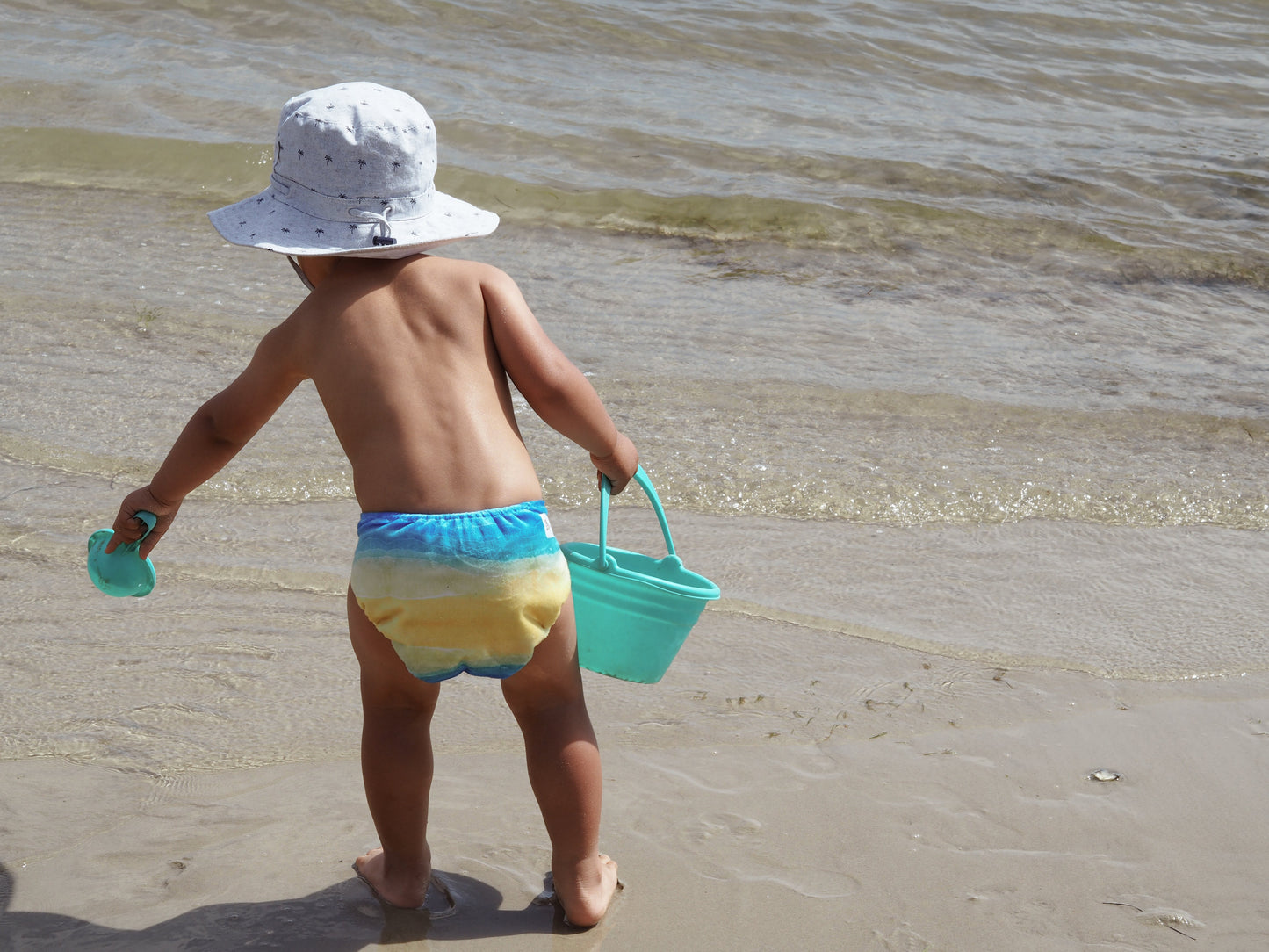Water Saving Week is here again — a crucial time to pause and reflect on how our everyday choices impact water consumption. Running from Monday 12th May, this week is packed with ideas to help households reduce water use and protect this precious resource. This year's opening theme, "Laundry Legend — Make Every Wash Count", couldn’t be more relevant for parents and carers using cloth nappies.
You might be wondering: how can cloth nappies, which involve regular washing, actually save water? Let’s unpack that.
The Hidden Water Cost of Disposable Nappies
Every disposable nappy comes with a hefty water footprint. It’s easy to forget the water embedded in the production of single-use products. Studies estimate that manufacturing one disposable nappy consumes approximately 545 litres of water — from growing raw materials like cotton and pulp to processing plastics and chemicals.
By comparison, while reusable cloth nappies require water to launder, the cumulative water usage over their entire life cycle is generally lower than the thousands of disposables a child might use.
Making Every Wash Count — Water-Saving Tips for Cloth Nappy Users
If you're already a cloth nappy user — or considering making the switch — you’re part of the solution. Here’s how to make sure you stay a Laundry Legend this Water Saving Week:
-
Wash Full Loads
Wait until you have a full load of nappies and other laundry before running your machine. Modern washing machines use roughly the same amount of water whether the load is small or large. -
Use Eco Settings
Many machines have water-efficient or eco wash cycles designed to reduce water usage. Opt for lower temperature settings (30-40°C is usually effective with a good detergent). -
Pre-rinse Strategically
If your nappies need a pre-rinse, consider manually rinsing heavily soiled items under a low-flow tap before adding them to the main wash. Or, run a short cold cycle with minimal water. -
Reuse Nappies Wisely
Choose high-quality cloth nappies that can last from birth to potty — and even be used for multiple children. Longevity reduces the need for manufacturing new nappies and saves both water and money in the long run. -
Spin Efficiently
Use a high spin speed to extract more water before drying — reducing drying time (and avoiding unnecessary tumble drying energy). -
Harvest Grey Water
If possible, reuse grey water from nappy washes (e.g., for flushing toilets or watering non-edible plants).
Small Changes, Big Impact
By switching to cloth nappies and adopting water-wise washing habits, you’re taking meaningful steps to cut household water use. As we celebrate Water Saving Week and champion Laundry Legends on Monday 12th May, remember that mindful laundering not only reduces water waste but also protects ecosystems and builds a sustainable future for our little ones.
Let’s make every wash — and every drop — count.
Happy Water Saving Week!

